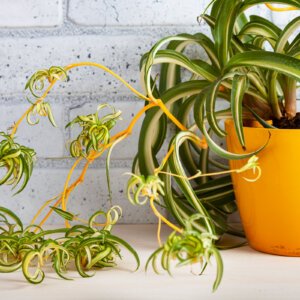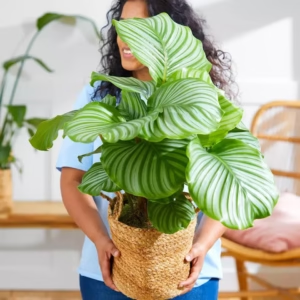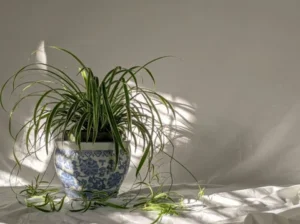Spider plants (Chlorophytum comosum) are one of the easiest houseplants to grow and even easier to propagate. If your spider plant has produced baby offshoots (often called spiderettes or plantlets), you’re just a few steps away from growing more beautiful plants for free.
In this guide, you’ll learn how to propagate spider plants step-by-step, along with tips to help them thrive. Whether you’re a beginner or a seasoned plant parent, this simple process will help you expand your indoor jungle effortlessly.
What Is Spider Plant Propagation?
The process of growing a new plant from the parent plant is called propagation. For spider plants, this usually happens through their babies, those little shoots hanging from long stems. These spiderettes can be rooted and grown into healthy, independent plants.
3 Easy Ways to Propagate Spider Plant
There are three common propagation methods for spider plants:
1. Water Propagation (Beginner-Friendly)
This method allows you to watch the roots grow in real time.
Steps:
- Snip a healthy spiderette with visible root nubs from the main plant.
- Place the spiderette in a glass of clean water, ensuring only the root area is submerged.
- Keep the glass in a bright, indirect light spot.
- Change the water every 2–3 days.
- Roots will grow within 5–10 days. Once they are 1–2 inches long, plant them in soil.
Why it works: It’s easy to monitor root development and ensures a high success rate.
2. Soil Propagation (Straight to the Pot)
This method skips the water stage and plants the spiderette directly in soil.
Steps:
- Choose a well-draining potting mix (cactus or indoor plant soil works well).
- Snip a healthy spiderette and plant it about 1 inch deep in moist soil.
- Lightly water and set in bright indirect light.
- For the first few weeks, keep the soil just a little bit moist.
Tip: Covering the pot with a clear plastic bag can help retain humidity and boost root growth.
3. Propagate While Attached to the Mother Plant
This method allows the spiderette to root without being removed.
Steps:
- Near the mother plant, put a small pot filled with soil.
- Gently pin or rest the spiderette on the soil surface.
- Keep the soil moist.
- Once it grows roots (usually within 1–2 weeks), cut the stem connecting it to the mother plant.
Benefit: It ensures less shock to the baby plant, leading to faster growth.
Best Time to Propagate Spider Plant
- Spring and early summer are ideal.
- During this period, spider plants are in active growth mode, making propagation quicker and more successful.
Where to Keep a Propagated Spider Plant
Once propagated:
- Place the new plant in bright, indirect light.
- Avoid harsh direct sunlight to prevent leaf burn.
- Water when the top inch of soil feels dry.
Common Mistakes to Avoid
- Overwatering: Newly propagated plants need moisture, not soggy soil.
- Using unhealthy spiderettes: Always pick the green, strong, and pest-free ones.
- Not enough light: Keep the baby plants in a well-lit area to promote root and leaf growth.
Frequently Asked Questions (FAQs)
Can you propagate a spider plant from a leaf?
No, spider plants are propagated using spiderettes, not individual leaves.
How long does it take for a spider plant baby to root?
In soil, it usually takes 1-2 weeks, and in water, 5-10 days.
Do spider plants like to be root-bound?
Yes, spider plants actually thrive a bit root-bound, which can encourage more babies to grow.
Final Thoughts
Propagating spider plants is a fun, low-risk way to multiply your greenery. With just a few snips and some patience, you can create a collection of vibrant, air-purifying spider plants for your home or even gift them to friends.





